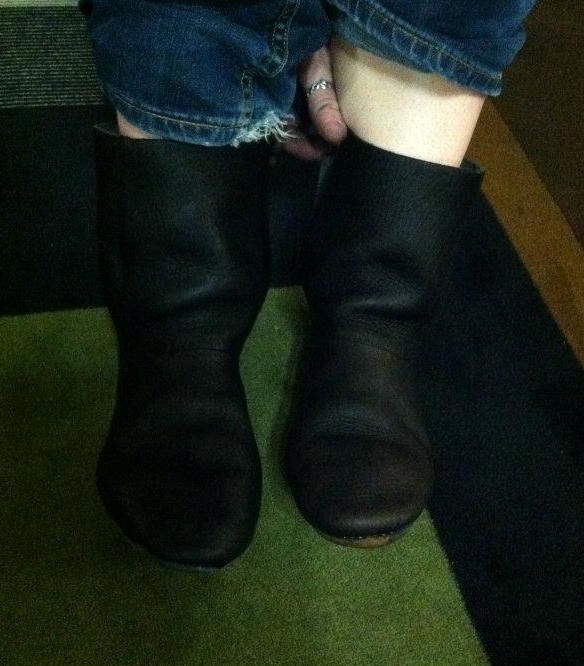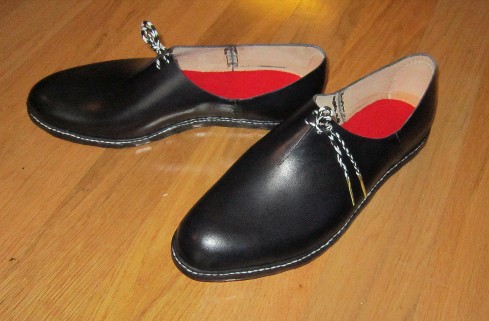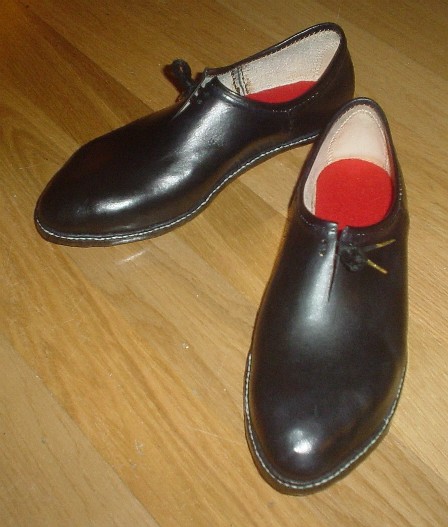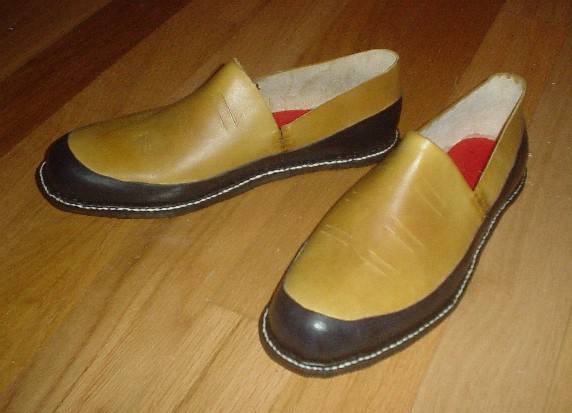I ended up visiting Los Alamos, New Mexico, for some work related activities, and while I was in the area, I taught a class on basic turnshoe construction and shoemaking. I packed a bag full of lasts, thread, bristles, wax, tools., etc. and made up a ton of stitching hanks in advance to prep for this. It was a great success, though we put in many more hours than I had expected we would need! A couple of things to note for next time:
1) Limit the class to four maximum – as it turned out, we only had four anyway, but this is really the most I could handle easily without going too crazy.
2) No tall boots! Ankle boots with one seam should be the tallest option. Otherwise, there is simply too much stitching to do.
3) Choose three styles of shoe, and stick to those. We spent a lot of time patterning, and I think that put us behind.
4) Stitching blocks and stirrups – everyone needs to have one. It makes life tons easier.
5) Thickness of leather – don’t try and compensate for difficulty in closing by selecting a heavier leather. It only makes your life more miserable in the end. You end up with a higher propensity for breaking awls, and it makes the shoes much more difficult to turn.
 |
One of the finished results of one of our students – not only did all of the shoes fit, but they all looked quite fantastic! Picture courtesy of Avivah. |
|


